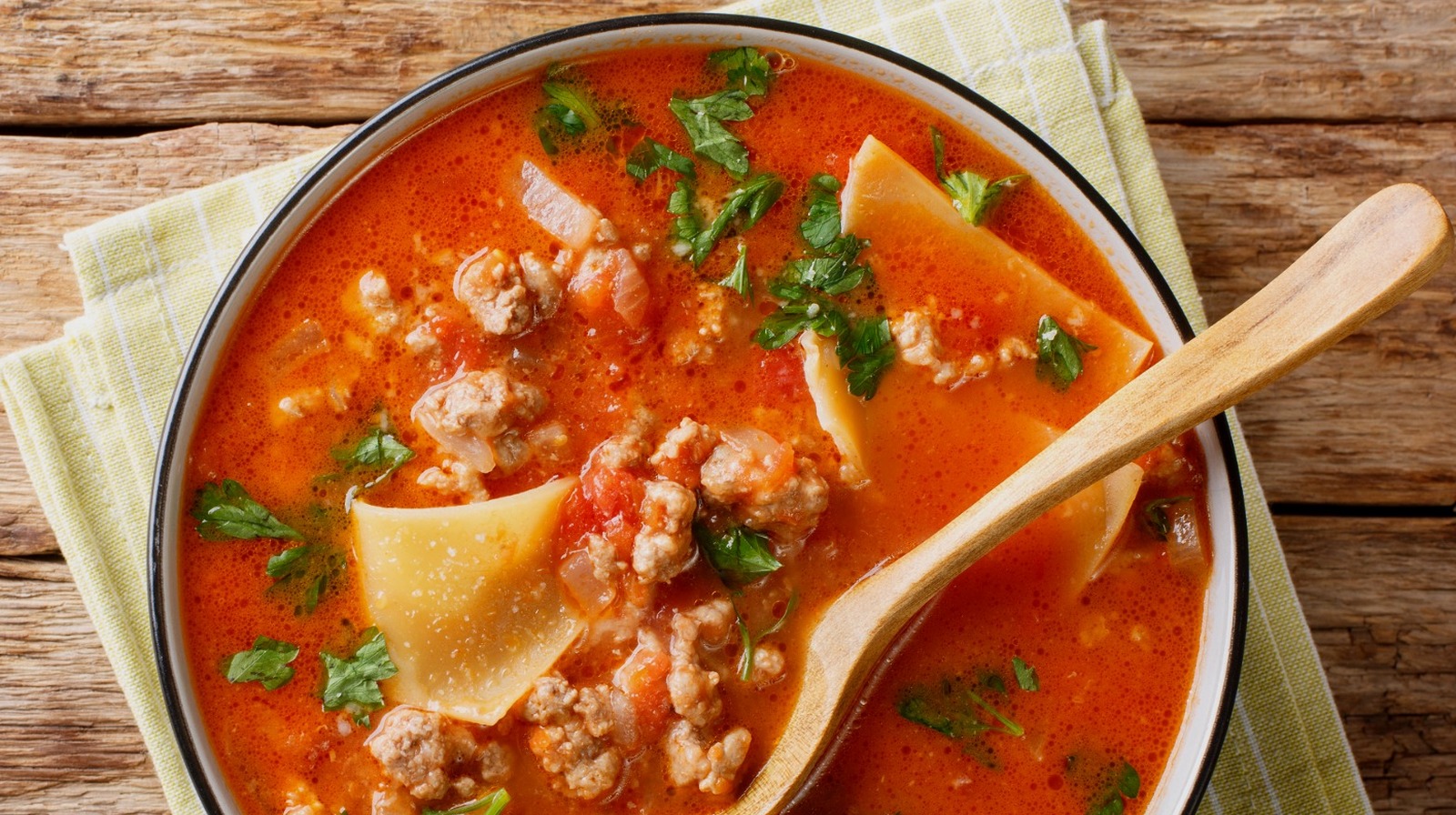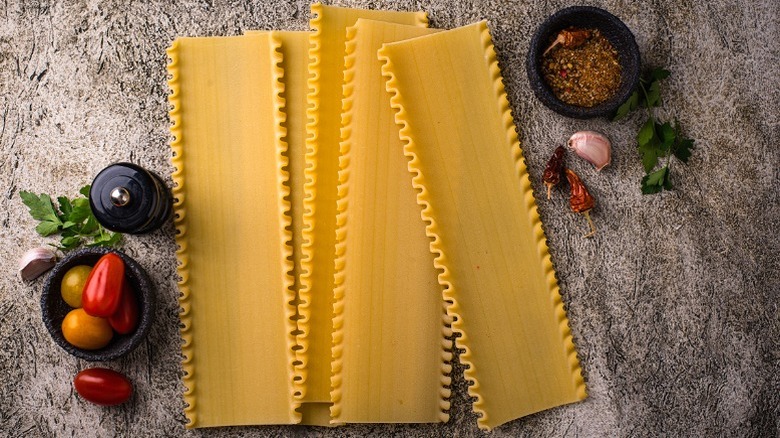Lasagna is delicious, but let’s be real: It can be kind of a pain to get right. It requires careful structuring and layering of ingredients — ensuring that the tomato sauce isn’t too watery, the cheese binds everything together, and the noodles don’t slide apart. By some miracle of laziness or culinary ingenuity, people found a way around these woes by throwing all of that stuff in a pot and calling it a soup. You can even make lasagna soup with three ingredients from Trader Joe’s.
To get the full range of classic flavors in lasagna soup, there still needs to be emphasis on the pasta noodles. They’re not merely a vessel for textural support in the dish — they have a unique taste and purpose that adds to the overall experience. You don’t have to cook the lasagna before adding it to the soup, but you should certainly try doing so if you want a more prominent pasta taste. The best way to bring out the potential of the pasta is to boil it with salted water and then bake it in fat before it mixes with the broth.
Benefits of cooking lasagna noodles before adding broth
Pasta is made from eggs, flour, and salt. When heated, the starch in the lasagna noodles gelatinizes. This stickiness retains salt from the water and allows the flavor to stick to the pasta. The reason pasta is cooked al dente is because this is the point where it has reached an ideal balance of softness and firmness. Overcooked pasta loses some of its starch and ends up taking in too much water, resulting in a mushy texture that won’t hold flavor as well. While it’s a more convenient cooking method, heating lasagna with broth in the slow cooker can result in overcooked pasta.
To make the most out of the boil-then-bake method, the lasagna should be boiled and then drained right before it reaches al dente. Smother the noodles in some butter or olive oil before baking them, just enough to develop a slight crisp on the edges without drying out. The lasagna will absorb the tasty salt and fat, and you can put the strips into bowls right as the broth has finished cooking. When the steaming warm broth hits the noodles, they’ll have enough time to soften and hold the broth’s flavor without getting soggy.
The boil-then-bake method is especially recommended if you’re using fresh homemade lasagna. Store-bought pastas are already dried out to be reheated, so there’s not as much risk with overcooking them in the slow-cooker — even Ina Garten sometimes uses boxed pasta. A good lasagna soup is whichever one makes you happy.






